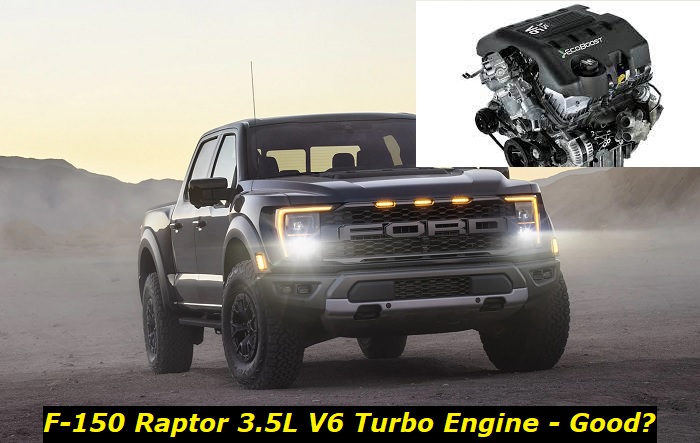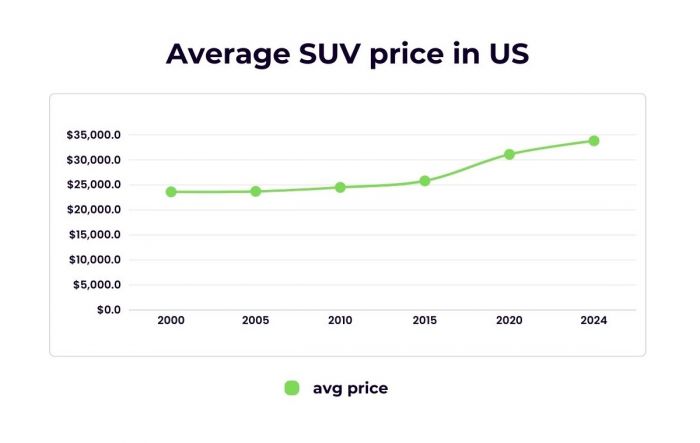The F-150 pickup truck has been one of the most popular full-size pickups in America for many years. But one of its modifications called Raptor has become legendary and is now one of the most wanted performance pickup trucks in many countries. This is the most powerful truck among the vehicles that you can buy not only for work but also for pleasure.
Today, we'll tell you about the Raptor-specific 3.5L EcoBoost D35 450-horsepower engine that is only used in the new-generation Ford F-150 Raptor and is really wonderful. This is the engine that will provide you with more power and rage than you can hold. Of course, it's still not the coolest engine in the series. But let's take it step by step.

Key features and my opinion about the engine
- Production years:2010-now
- Average lifespan of 3.5L EcoBoost:190,000-220,000 miles
- Fuel supply type:direct injection
- Power range:310-660 hp
- Fuel efficiency:average
- Engine block material:aluminum
- Engine reliability score:medium
- The most common problems:intercooler problems, timing chain stretching, carbon buildup on intake valves, coolant and oil leaks.
Key facts about the 3.5L Turbo engine in the Ford F-150 Raptor
The new Raptor is the third-gen performance pickup truck that was released in 2021. But the special edition of the 3.5L EcoBoost had been there before - it was introduced in 2015 and was installed in quite a lot of models including the Ford GT, Expedition, and Lincoln Navigator. For the F-150 Raptor, the engine was tuned and prepared to ensure every owner gets the best out of its 6 cylinders.
So, the 3.5L V6 EcoBoost with some changes and modifications is actually a good choice for the Raptor. But it's not the most efficient and impressive engine in the model. The Raptor R offers the 5.2L V8 supercharged engine that can get you 700 horsepower and we just can't imagine how this car goes. One problem only - it costs over $109,000!
The Raptor's price starts from $78,500 and it also offers a lot of cool things:
- the engine is the 3.5L V6 with 450 horsepower and 510 lb-ft of torque, it's much more interesting than the 3.5L EcoBoost in non-Raptor trims;
- the engine is mated with the 10-speed automatic transmission made in cooperation with GM - the same transmission that is installed in all F-150 models but with some modifications;
- this is the second generation of the 3.5L EcoBoost engine (D35) which has been there since 2015, its block can handle up to 647 horsepower;
- this version of the engine is not going to bother you with carbon buildup because engineers added port fuel injection and kept the direct injection;
- also, they added the system that will turn off the high-pressure fuel pump and the direct injection under low loads to prevent common problems of the older 3.5L EcoBoost;
- some updates for the turbocharger allow it to work smoothly and live longer, so major turbo problems are also not common for this engine;
- each cylinder bank is driven by a separate chain which makes the engine much more reliable and durable and solves another common issue of the older 3.5L V6 EcoBoost.
Also, engineers did their best to improve the VCT system. But they obviously failed. Phasers will still cause some problems and we will come back to this topic later. Within the last years, Ford has introduced several changes to the VCT system and also made some recalls and service bulletins. They even prolonged the warranty period for these engines when it comes to VCT phasers.
Another new thing for this version of the 3.5L V6 EcoBoost D35 in the new F-150 Raptor is the start-stop system. The unusual thing for the powerful truck, we should say. Ford introduced this feature to limit emissions during city driving.
So, this is not the previous 3.5L V6 EcoBoost. This engine is much more interesting, technological, and also better in many aspects.
How long will the F-150 Raptor's 3.5L V6 450-hp engine live?
Well, this engine got some turbo modifications and higher compression in comparison with the 3.5L EcoBoost in a non-Raptor trim of the F-150. It means that the performance engine is not going to be the most durable powerplant you've ever seen. We believe this engine is going to live for about 200,000 miles or 10 years before it needs really expensive repairs.
Although internet experts claim a more positive lifespan for this engine, we totally disagree. We even doubt that the majority of Raptor owners will get these engines up to 200K miles because of the driving style. If you pay for the Raptor, you are going to squeeze everything this truck can offer.
We've seen 40,000-mile Raptors of the third generation in Ford dealerships with big and expensive problems. Thank goodness, these problems are covered by the warranty most of the time. But if you happen to repair this engine for your own money, your wallet won't like it for sure. Parts and labor are going to be extremely expensive.
What are the common problems with the new 3.5L V6 engines in the F-150 Raptor?
Unfortunately, we don't have any reasons to exclude this traditional section that is present in all our engine reviews. The new 3.5L V6 EcoBoost for the F-150 Raptor is not the most problematic engine but it's going to have some issues that will make its death closer than you may think. We've tried to outline the most important and common problems that can happen with these engines.
Here they are:
1. VCT problems
Phasers are still not durable and not eternal at all. Tapping phasers are not very common for the F-150 Raptor only because many engines in these new vehicles haven't crossed the 50K-mile mark. After they do, phasers may start tapping when the engine is cold. This gets on your nerves in a vehicle that costs over 70 grands!
Dealers have several bulletins that allow them to repair these phasers under warranty, so always go to the dealer even if the overall warranty period is over.
2. Timing chains issues
Two chains should have reduced the number of problems with your V6 EcoBoost engine but we still think that after 100K miles you will have to replace them. We've already read about stretched and rattling timing belts in these engines and these problems are yet to be reported by thousands of owners.
Unfortunately, replacing both timing chains in this engine is going to be expensive. About twice as expensive as it was with the older 3.5L V6 EcoBoost engine of the 1st gen.
3. Depressing fuel consumption
The engine is claimed to allow your F-150 Raptor to go about 15 MPG in the city and 18 MPG on highways. But in real life, the gas mileage appears to be much worse. Once you press the gas pedal to the metal, your F-150 Raptor truck becomes a hungry dinosaur that drinks up all the fuel from its huge tank in just a blink of an eye.
If you want to save up some money and are concerned about ecology, the 3.5L V6 EcoBoost is certainly not your choice. Think about a hybrid or the base 2.7L turbo engine.
4. A bunch of high-mileage engine problems
This engine is made for performance, not for durability. It means that you will have to invest some money in this engine after it reaches 80K miles or so. High-mileage Raptor engines are very risky and can throw some expensive problems at any moment.
We also think that repairing this engine after a lot of wear is an insane idea that will take tons of money from you. Once some major problems show up, it's easier and cheaper to replace the engine (if you can use the word cheap in this context at all).
What should you do to let the EcoBoost D35 engine live longer?
After reading the article, especially the section with problems, you may think that the 3.5L V6 EcoBoost 450-hp engine is not for you. But we want to assure you that you won't find a more reliable performance engine in trucks in America as of today. Just remember that you pay for the performance and power, not for the reliability and economy.
Here's what you should do to make it go up to 200,000 miles or even more:
- stick to the service requirements issues by Ford;
- only repair and maintain the truck in a Ford dealership and keep the warranty as long as possible;
- check the phasers at 50,000 miles and then every 20K miles during regular maintenance;
- often check oil levels and don't allow the engine to work with low lubricant level;
- keep an eye on possible overheating - this may kill the engine pretty fast.
We won't recommend you anything about the driving style because we perfectly know how Raptors are driven. What's more, Ford also knows how you are going to drive, so they made this engine able to withstand some tortures. But be careful with towing - it can tow no more than 8,200 lbs, otherwise the transmission may get some problems.
About the authors
The CarAraC research team is composed of seasoned auto mechanics and automotive industry professionals, including individuals with advanced degrees and certifications in their field. Our team members boast prestigious credentials, reflecting their extensive knowledge and skills. These qualifications include: IMI: Institute of the Motor Industry, ASE-Certified Master Automobile Technicians; Coventry University, Graduate of MA in Automotive Journalism; Politecnico di Torino, Italy, MS Automotive Engineering; Ss. Cyril and Methodius University in Skopje, Mechanical University in Skopje; TOC Automotive College; DHA Suffa University, Department of Mechanical Engineering






Add comment